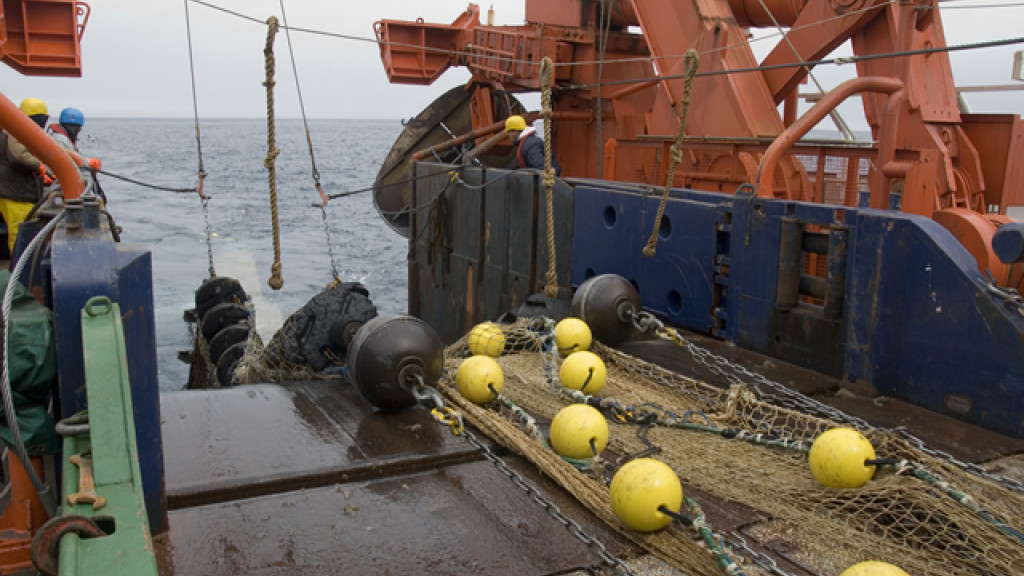Polarstern / CAML expedition: weekly report - height of the biological fishing program
Two weeks in and we have reached the height of the biological fishing program. Catches are mainly processed by Susanne Schöling and Dietmar Pietschok from the maritime city of Hamburg, as well as those colleagues living landlocked in Düsseldorf. But all of them work together as part of the "fish team" and conduct their scientific duties in a very efficient manner. Varied compositions of juvenile ice fish, Antarctic cod and eelpouts are being caught in the net. Among the more unusual species are lantern fish, daggertooths, Antarctic silverfish, and a whole bunch of other animals, that we don't even have a common name for.
There has also been variation in the extent of catches. Earlier we reported on Polarstern's biggest fish catch in Antarctica - five tons of Antarctic cod - but other catches have been very meagre.
The shoaling behaviour of Antarctic cod makes it an easy target and therefore poses a particular threat to its populations. If commercial fisheries would resume, these dense aggregations could be scooped up in an instant and there stocks would be overfished immediately. Our cephalopod specialists, Elaina Jorgensen from Seattle, USA and Iain Barratt from Belfast, UK are also benefiting from specimens caught in the bottom trawl. They are closely collaborating with a working group from Kiel in Germany. On three occasions' fish and amphipod traps have been deployed as part of the night program. Scientists bait the traps and let them sink to the bottom of the sea where they stay for 1-2 days.
The traps consist of two parts, firstly a weight that keeps the trap on the seafloor and secondly the actual trap with floats attached. In order to get the traps back to the surface, an acoustic signal triggers a release mechanism to free the trap from the weight. The traps then float to the sea surface where they are retrieved by the crew. All operations have been without flaws. Amphipods and isopods have been abundantly caught, much to the delight of the two Belgian scientists Henri Robert and Cedric d'Udekem d'Acoz, which are specialists for this group of animals. Only the fish biologists are short of such plentiful harvests.
On one occasion the bait was meticulously stripped to the bones by myriads of crustaceans, hundreds of these scavengers were still sitting on the remains, in contrast another bait was barely touched.
Originally, our cetacean researchers wanted to focus on general and behavioural observations as well as abundance estimates of Minke whales.
Instead they keep encountering additional species - eight, at the time of writing! This is far more than a welcome, scientific "by-product"
these sighting broaden our knowledge of the life of such animals and their distribution in the World's oceans.
We celebrated Christmas in a suitable manner. On Christmas Eve, as tradition demands, sausages and potato salad were served for dinner.
Afterwards in the Blue Salon, the "invisible friend" ceremony took place, a choir gave Christmas carols in various languages to its best abilities, and the Captain gave a little speech before all of us wished each other Merry Christmas. On Christmas Day work didn't start before eight o'clock in the morning. This gave everyone the opportunity to lay in bed for a further two hours. Other things onboard the vessel that remind us of Christmas are the bountiful "Bunte Teller" (a plate full of sweets and treats) given as a present at the Christmas dinner and three well decorated Christmas trees. It will be New Year by the time this weekly report reaches our home countries. This gives me the opportunity to wish all of those that feel related to us, on behalf of all participants, all the best for 2007.
Yours
Julian Gutt

